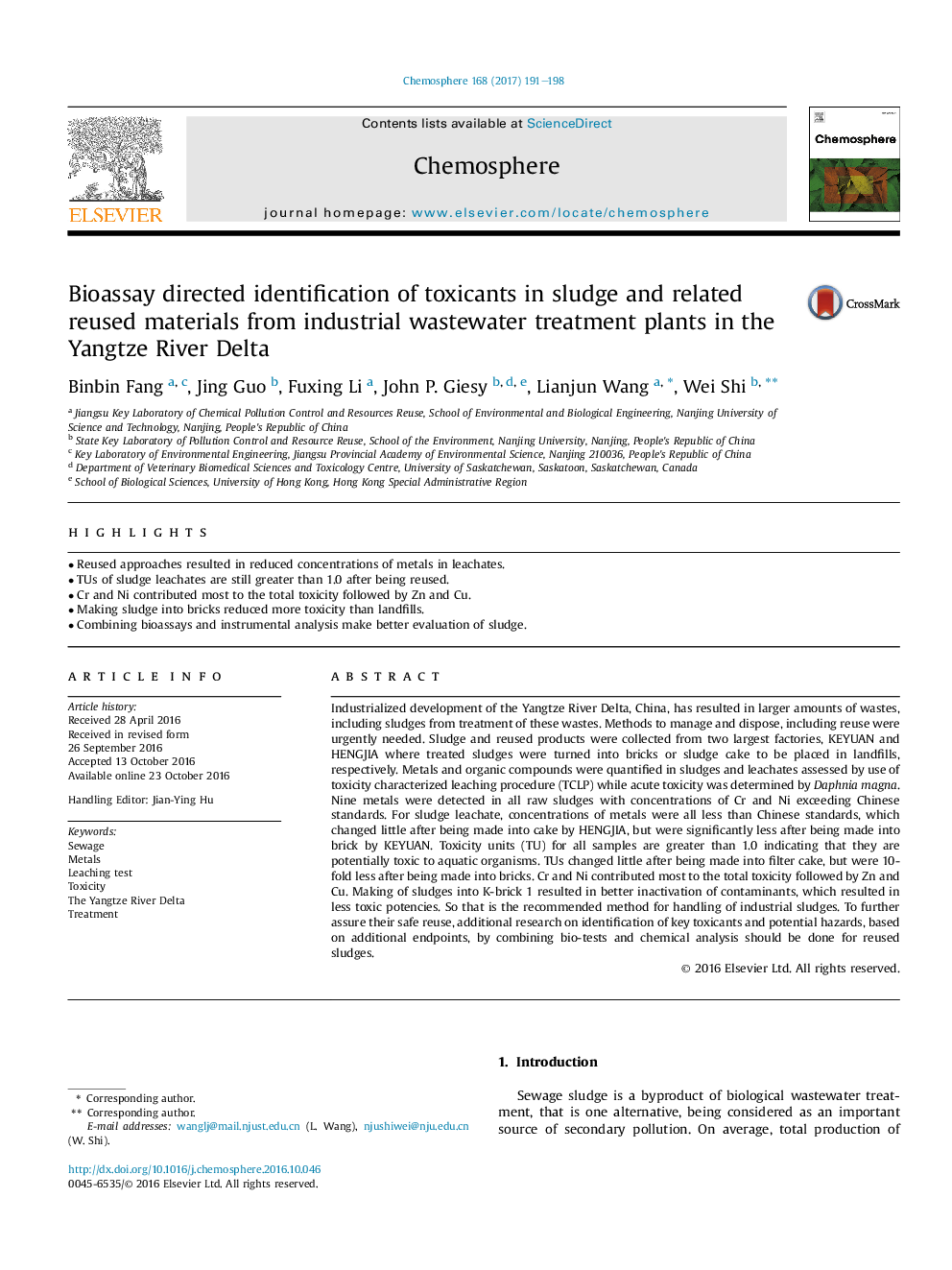| کد مقاله | کد نشریه | سال انتشار | مقاله انگلیسی | نسخه تمام متن |
|---|---|---|---|---|
| 5746657 | 1618803 | 2017 | 8 صفحه PDF | دانلود رایگان |

- Reused approaches resulted in reduced concentrations of metals in leachates.
- TUs of sludge leachates are still greater than 1.0 after being reused.
- Cr and Ni contributed most to the total toxicity followed by Zn and Cu.
- Making sludge into bricks reduced more toxicity than landfills.
- Combining bioassays and instrumental analysis make better evaluation of sludge.
Industrialized development of the Yangtze River Delta, China, has resulted in larger amounts of wastes, including sludges from treatment of these wastes. Methods to manage and dispose, including reuse were urgently needed. Sludge and reused products were collected from two largest factories, KEYUAN and HENGJIA where treated sludges were turned into bricks or sludge cake to be placed in landfills, respectively. Metals and organic compounds were quantified in sludges and leachates assessed by use of toxicity characterized leaching procedure (TCLP) while acute toxicity was determined by Daphnia magna. Nine metals were detected in all raw sludges with concentrations of Cr and Ni exceeding Chinese standards. For sludge leachate, concentrations of metals were all less than Chinese standards, which changed little after being made into cake by HENGJIA, but were significantly less after being made into brick by KEYUAN. Toxicity units (TU) for all samples are greater than 1.0 indicating that they are potentially toxic to aquatic organisms. TUs changed little after being made into filter cake, but were 10-fold less after being made into bricks. Cr and Ni contributed most to the total toxicity followed by Zn and Cu. Making of sludges into K-brick 1 resulted in better inactivation of contaminants, which resulted in less toxic potencies. So that is the recommended method for handling of industrial sludges. To further assure their safe reuse, additional research on identification of key toxicants and potential hazards, based on additional endpoints, by combining bio-tests and chemical analysis should be done for reused sludges.
Journal: Chemosphere - Volume 168, February 2017, Pages 191-198